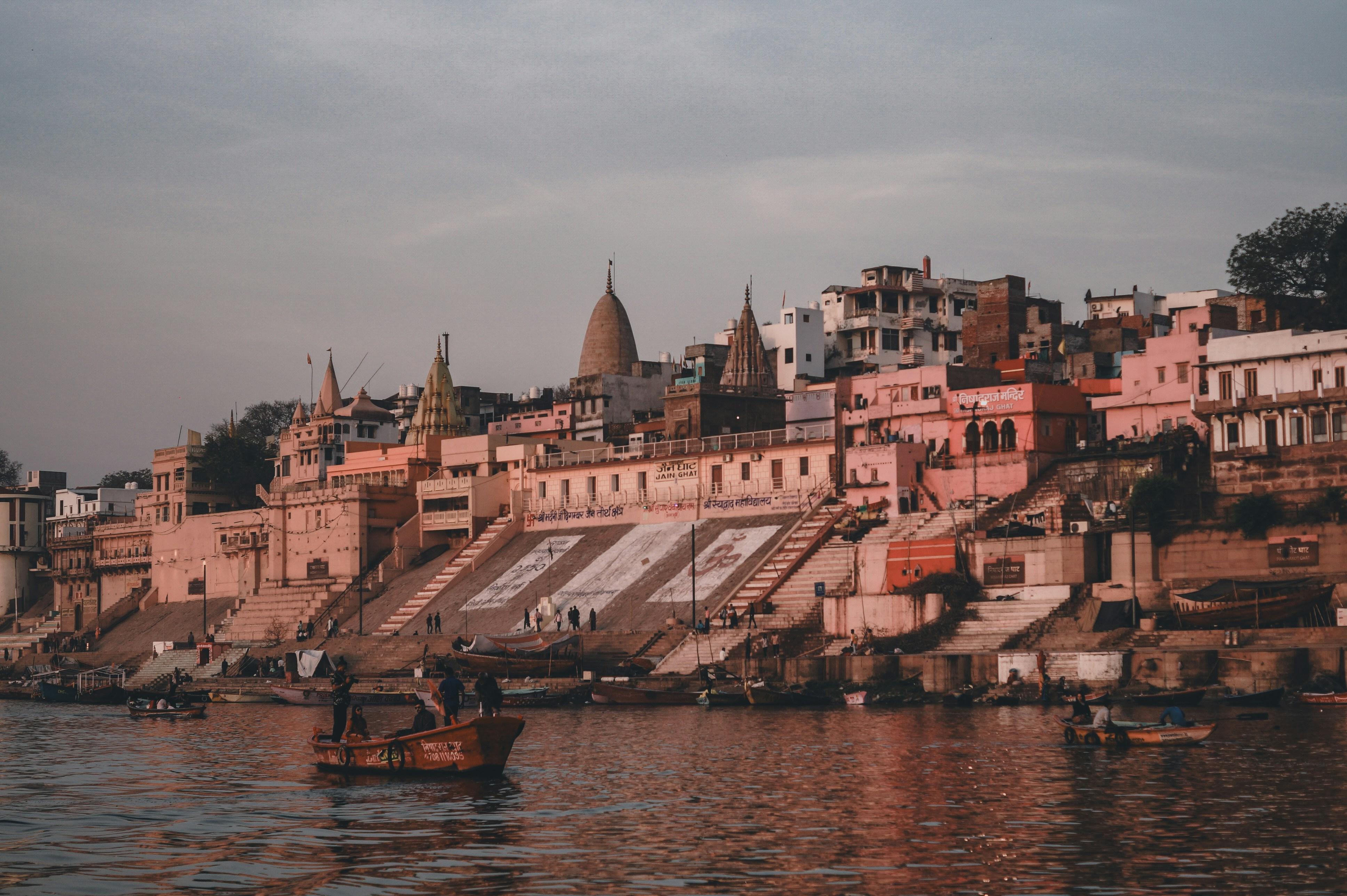Ayodhya, one of the seven most sacred cities in Hinduism, is a timeless destination that blends mythology, spirituality, and heritage. Ayodhya tourist places offer a rich tapestry of temples, ghats, gardens, and historical landmarks that attract pilgrims, history buffs, and curious travelers alike.
Located on the banks of the Sarayu River in Uttar Pradesh, Ayodhya is believed to be the birthplace of Lord Rama, the seventh incarnation of Vishnu. With its deep roots in the Ramayana and centuries of devotion, Ayodhya is more than a city—it’s a spiritual experience.
🛕 Top Ayodhya Tourist Places You Must Visit
Here’s a curated list of the most iconic and meaningful places to explore in Ayodhya:
1. Ram Janmabhoomi
-
Significance: Believed to be the exact birthplace of Lord Rama.
-
Highlights: The newly constructed Ram Mandir, white marble architecture, divine idol of Ramlalla.
-
Experience: Witness the grandeur of the temple and feel the spiritual energy of millions of devotees.
Ram Janmabhoomi is the heart of Ayodhya and a must-visit for every traveler.
2. Hanuman Garhi
-
Significance: A 10th-century temple dedicated to Lord Hanuman.
-
Highlights: Located atop a hill, with a beautiful idol of Hanuman seated on Maa Anjani’s lap.
-
Tradition: It’s customary to visit Hanuman Garhi before Ram Janmabhoomi.
This temple is a symbol of protection and devotion.
3. Kanak Bhawan
-
Significance: Gifted to Sita by Queen Kaikeyi after her marriage to Rama.
-
Highlights: Golden-crowned idols of Rama and Sita under a silver canopy.
-
Architecture: Ornate interiors and vibrant murals.
Known as “Sone-ka-Ghar,” Kanak Bhawan is a visual and spiritual delight.
4. Ram Ki Paidi
-
Significance: A series of ghats along the Sarayu River.
-
Highlights: Scenic views, evening aarti, and ritual bathing.
-
Experience: Take a dip in the holy river and attend the mesmerizing Deepotsav during Diwali.
Ram Ki Paidi is perfect for reflection and serenity.
5. Nageshwarnath Temple
-
Significance: Dedicated to Lord Shiva, believed to be built by Kush, son of Lord Rama.
-
Highlights: Ancient architecture, Shiva lingam, and vibrant festivals.
-
Location: Near Theri Bazaar, adjacent to Ram Ki Paidi.
This temple adds a Shaivite dimension to Ayodhya’s spiritual landscape.
6. Dashrath Bhavan
-
Significance: Believed to be the royal residence of King Dashrath, father of Lord Rama.
-
Highlights: Ramayana-themed murals, devotional chants, and cultural programs.
A place that brings the epic Ramayana to life.
7. Sita Ki Rasoi
-
Significance: A symbolic kitchen believed to be used by Goddess Sita.
-
Highlights: Ancient utensils, idols of Ram’s brothers and their wives.
-
Experience: A glimpse into royal domestic life and devotion.
This site reflects the humility and grace of Sita.
8. Mani Parvat
-
Significance: A small hill believed to be part of the Sanjeevani mountain carried by Hanuman.
-
Highlights: Panoramic views, peaceful surroundings, and mythological importance.
Ideal for quiet contemplation and storytelling.
9. Guptar Ghat
-
Significance: Believed to be the site where Lord Rama took Jal Samadhi.
-
Highlights: Riverside temples, evening aarti, and spiritual ambiance.
A lesser-known but deeply revered spot.
10. Tulsi Smarak Bhawan
-
Significance: Dedicated to Goswami Tulsidas, author of Ramcharitmanas.
-
Highlights: Ramayana museum, cultural events, and literary archives.
Perfect for those interested in devotional literature and history.
11. Gulab Bari
-
Significance: Tomb of Nawab Shuja-ud-Daula, surrounded by rose gardens.
-
Highlights: Mughal architecture, fountains, and floral beauty.
A peaceful blend of history and nature.
12. Jain Shwetambar Temple
-
Significance: Ayodhya is believed to be the birthplace of five Jain Tirthankaras.
-
Highlights: Marble idols, serene atmosphere, and Jain rituals.
Ayodhya’s spiritual diversity is reflected in this temple.
13. Birla Temple (Ram Janaki Temple)
-
Significance: A modern temple dedicated to Lord Ram and Sita.
-
Highlights: Clean architecture, peaceful ambiance, and accessibility.
A great stop for those seeking a quiet spiritual experience.
14. Deokaali Temple
-
Significance: Associated with tales from the Ramayana.
-
Highlights: Devotional rituals and local legends.
A hidden gem for mythology lovers.
15. Raj Dwar Mandir
-
Significance: One of the oldest temples in Ayodhya.
-
Highlights: Historical architecture and spiritual depth.
A must-visit for heritage enthusiasts.
📅 Best Time to Visit Ayodhya
-
October to March: Pleasant weather and ideal for sightseeing.
-
Festivals to Experience:
-
Ram Navami (March/April): Celebrates Lord Rama’s birth.
-
Diwali & Deepotsav (October/November): Ayodhya glows with millions of lamps.
-
Shravan Jhula Mela (July): Celebrates Lord Ram and Sita’s swing festival.
-
Dussehra & Ram Leela (October): Theatrical performances and cultural vibrancy.
-
🧳 Travel Tips
-
Dress Modestly: Especially when visiting temples and ghats.
-
Stay Hydrated: Carry water and wear comfortable footwear.
-
Respect Rituals: Observe silence during aarti and avoid flash photography.
-
Local Guides: Hire one for deeper insights into mythology and history.
-
Connectivity: Ayodhya is well-connected by road, rail, and air (Ayodhya Airport).
🏨 Where to Stay
Ayodhya offers a range of accommodations:
-
Budget Stays: Dharamshalas and guesthouses near Ram Janmabhoomi.
-
Mid-Range Hotels: Comfortable options with basic amenities.
-
Luxury Retreats: Heritage hotels and spiritual resorts for a premium experience.
📝 Sample Itinerary (3-Day Ayodhya Tour)
Day 1
-
Arrive in Ayodhya
-
Visit Ram Janmabhoomi and Hanuman Garhi
-
Evening aarti at Ram Ki Paidi
Day 2
-
Explore Kanak Bhawan, Dashrath Bhavan, and Sita Ki Rasoi
-
Visit Nageshwarnath Temple and Tulsi Smarak Bhawan
-
Sunset at Guptar Ghat
Day 3
-
Visit Mani Parvat and Jain Shwetambar Temple
-
Explore Gulab Bari and Birla Temple
-
Depart with spiritual memories
🧭 Final Thoughts
Ayodhya tourist places offer more than just sightseeing—they offer a journey into India’s spiritual soul. Whether you're tracing the footsteps of Lord Rama, soaking in the serenity of the Sarayu River, or exploring centuries-old temples, Ayodhya invites you to pause, reflect, and reconnect.
With the right itinerary, Ayodhya becomes not just a destination—but a divine experience.



